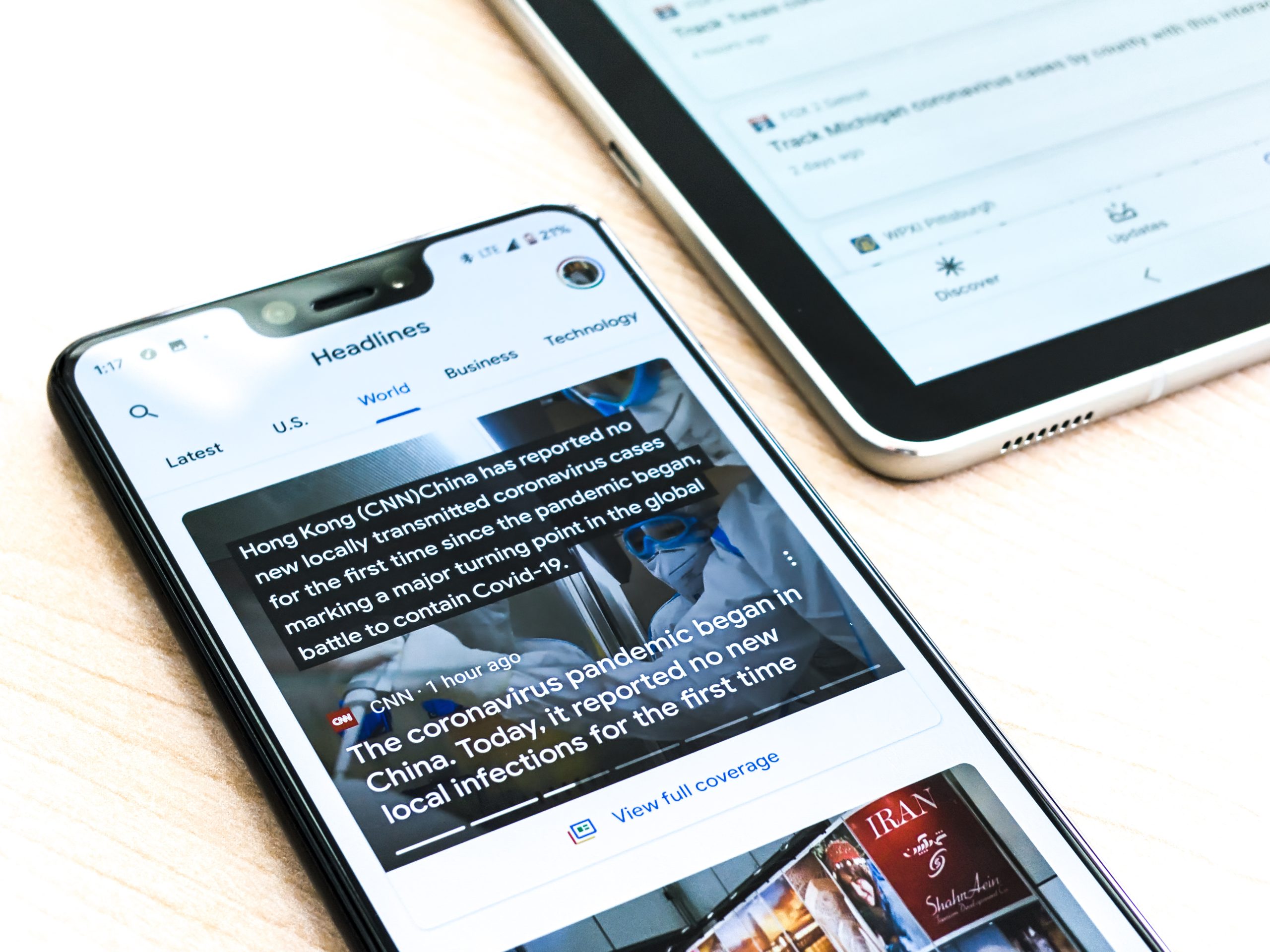There’s a lot going on in the world to make us feel upset or anxious—political debates, climate change, wars, social justice issues, a global pandemic, and the list goes on and on. We live in an age where information and news from around the globe is delivered to billions of people instantaneously. But that hyper-connectiveness comes with a cost.
What Is Doomscrolling
Doomscrolling refers to spending excessive amount of screentime consuming negative news. People most often turn to doomscrolling when feeling depressed, anxious, or otherwise out of control, and it’s often associated with hyper-focusing on a specific bad news topic. Although the term originated on Twitter in 2018, both the term and practice of doomscrolling skyrocketed during the COVID pandemic. During the height of the pandemic when so many people were stuck inside due to lockdowns, there was a lot of uncertainty about what the future would look like. And so many turned to their phones. Scouring news and social media apps, people felt compelled to know the latest. How many cases and deaths today? What about other counties? What are epidemiologists predicting? Some researchers have pinpointed doomscrolling to be a “compulsive need to try and get answers when we’re afraid.”
Scrolling through endless dismal news is fueled by social media. Social media apps are designed to be addictive (see our blog post how our developers use our psychology against us to make technology addictive) in order to maximize profits for tech companies. App features like infinite scroll, instant refresh, and boosting the most outrageous or rage-inducing content strongly contribute to the ease in which people can fall into doomscrolling. Social media is designed to keep users hooked, and this combined with human fascination, a desire to be informed, and our catastrophizing tendencies lead to the disheartening rabbit holes of doomscrolling.
The Effects of Doomscrolling
Many start doomscrolling out of an innocent desire to be informed, or because we are our worried about some current events. However, when we spend countless hours scrolling or do so compulsively, it can have serious negative effects on our mental and physical health.
Researcher Megan E. Johnson has described doomscrolling as “an unhealthy coping mechanism” for our anxiety. Rather than soothing the anxiety we were already feeling, it increases feelings of unease, anxiousness, and paranoia. In a number of studies (from Russia, Germany, and Norwary), researchers have found that people who doomscrolled about COVID had a higher rate of anxiety about COVID. Doomscrolling and large amounts of screentime influence our mental health in other ways too. There is a body of research to show increased time scrolling means higher levels of disconnection, depression, and loneliness.
Our physical health also suffers from doomscrolling. People who regularly doomscroll have a harder time sleeping and have more irregular sleep patterns. Doomscrolling can also cause other problematic behaviors like overeating or lower attentiveness. When we experience high anxiety, our bodies spend a long periods of time in fight-or-flight mode, which has been linked to a number of other health issues like headaches, heart disease, digestive issues, and high blood pressure.
Tips to Limit Doomscrolling
Obviously, there are a lot of reasons to want to limit our doomscrolling. Although it can feel overwhelming, below are some suggestions on how to get started. Please feel free to use one, some, or all of the following to combat the self-destructive nature of doomscrolling.
Reflect on Why You Are Doomscrolling in the First Place
Before hopping on your phone, do a mental check-in. How are you feeling? Are you anxious? Scared? Lonely? There are other ways to address those feeling besides turning to our phones. And by recognizing those emotional needs, you can start addressing them in more productive ways (for ideas, look at the last section).
Set Boundaries
If you want to stay informed, stopping the scroll cold turkey is not an option. Instead, try setting a timer before you start your scroll. This can be aided by digital wellness apps and features (app timers, screen time trackers, etc.). You can also try limiting yourself to news to only a certain time of day or physical place. For example, you may only need to catch up on news in the kitchen after breakfast.
Another boundary you can set is editing who you follow and what kind of content you want to see on your feeds. If a particular source makes you especially anxious, unfollow them. You can also look for creators and content that you find uplifting to add to your feeds.
Mindful Scrolling
Sometimes we need to slow down the actual act of scrolling. Read and think about each post for a beat or two longer than you normally would. Be a critical consumer of digital media. If a post brings a lot of emotion to the surface, fact-check it or think about the motivations of the creator. Stay cognizant and check in with yourself. Why did you start scrolling? Did you find the information you were looking for?
Try to only pick up your phone and turn on your computer consciously. When we check our devices compulsively, we can fall victim to doomscrolling.
Grounding Techniques
When you are feeling overwhelmed by the state of the world, lock your phone and try a couple of breathing exercises. While focusing on your breath, you can also do other grounding exercises. What do you smell and hear? What does your body feel like? There are plenty of apps or videos online to walk you through simple grounding techniques.
Another way to stay grounded is making a gratitude list. Even if it starts out small, this is a good way to recognize what is going well in your life. And research has shown that gratitude lists have other advantages too: positive emotions, improved health, better equipped to deal with adversity, and the foundation to build stronger and more meaningful relationships.
Unplug
Doomscrolling can steal time away from things that promote and support our mental well-being. Unplugging for a day, or even a few hours, can help us return to those kinds of activities. What are some uplifting activities for you? Maybe you could reach out to a friend and do something fun together; read a book or take a walk; call a family member; cook a delicious meal; take time on a hobby like painting or knitting.



